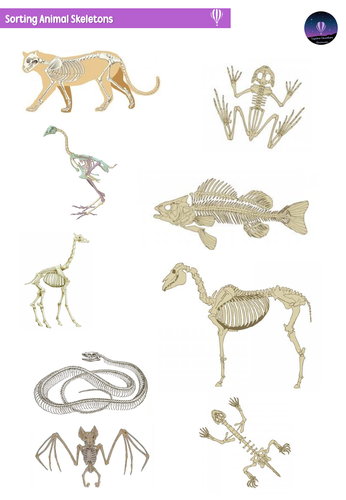






Do you want to teach your KS2 students about the amazing diversity of animal skeletons? Do you want to help them develop their scientific skills of observation, comparison, and classification? Do you want to challenge them to learn more about endoskeletons and other types of skeletons?
If you answered yes to any of these questions, then this lesson is for you!
This lesson is designed for KS2 students and covers the following objectives:
L.O.: I know that skeletons differ between animals.
Success Criteria:
★ I can name and describe the main features of an endoskeleton and give examples of animals that have one.
★ I can compare and contrast different animal skeletons and sort them into groups based on their similarities and differences.
★ I can write a comparison between two animal skeletons using scientific vocabulary and evidence.
This lesson includes:
★ A detailed lesson plan with learning objectives, success criteria, and detailed inputs
★ A PowerPoint presentation with clear explanations, images, and videos
★ A worksheet for Activity 1, where students match animal skeletons to their bodies
★ Activity where children sort animal skeletons in different ways using hoops
★ A comparison sheet where children write the similarities and differences between two animal skeletons
★ Challenge sheet - information text about skeletons
This lesson is aligned with the National Curriculum for England and covers the following objective:
Identify that humans and some other animals have skeletons and muscles for support, protection and movement
You may also be interested in…
LKS2 MAGNETS and FORCES Science Unit - 6 Outstanding Lessons
KS2 LIGHT and SHADOWS Science Unit - 5 Outstanding Lessons
KS2 ELECTRICITY Science Unit - 7 Outstanding Lessons
Customer Support:
Encountering any challenges or have specific requests? Contact our support team directly at explore_education@outlook.com for a swift response.
Special Offer:
Enjoying this resource? Leave a review and receive a complimentary resource of your choice! Email us your purchase receipt and a screenshot of your review to avail this offer.
This lesson is suitable for Key Stage 2 students of all abilities and can be adapted to suit your needs. It is ideal for teaching science as a discrete subject or as part of a cross-curricular topic.
Keywords: KS2, science, animal skeletons, vertebrates, endoskeletons, comparison, classification, lesson plan, PowerPoint, worksheet, challenge, plenary, interactive, engaging, fun, learning, National Curriculum.
Something went wrong, please try again later.
This resource hasn't been reviewed yet
To ensure quality for our reviews, only customers who have purchased this resource can review it
Report this resourceto let us know if it violates our terms and conditions.
Our customer service team will review your report and will be in touch.